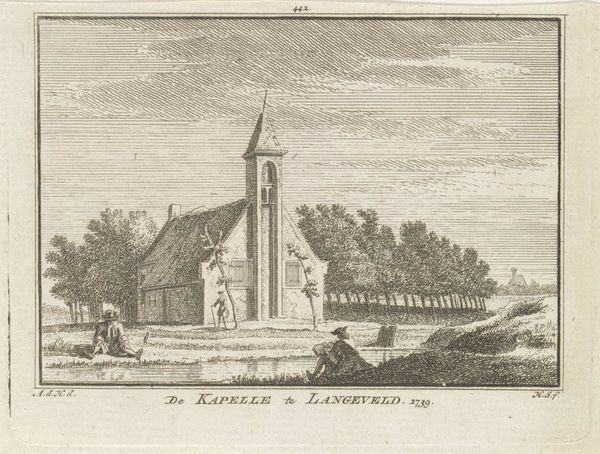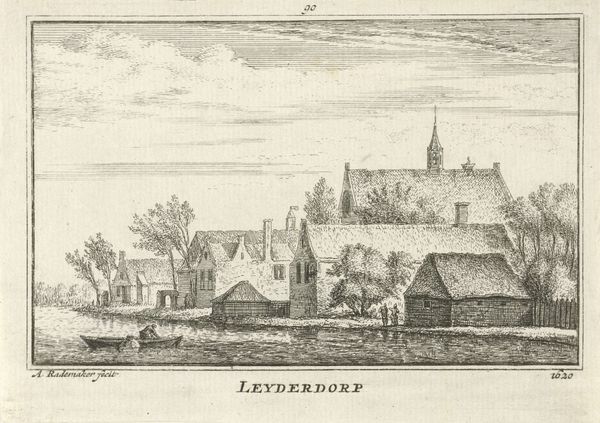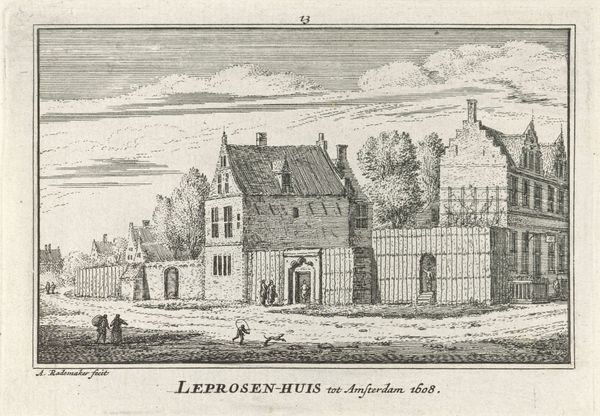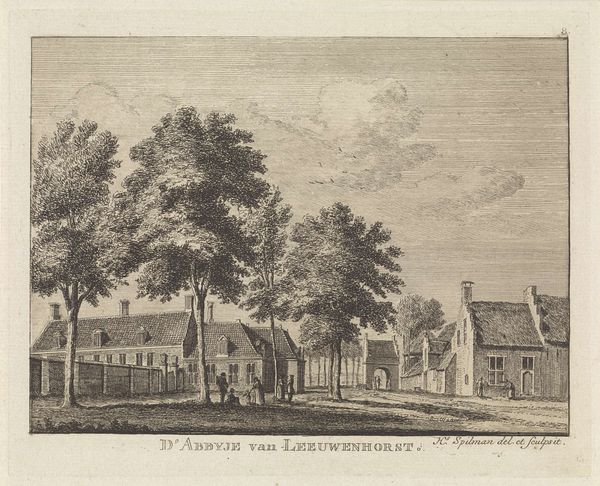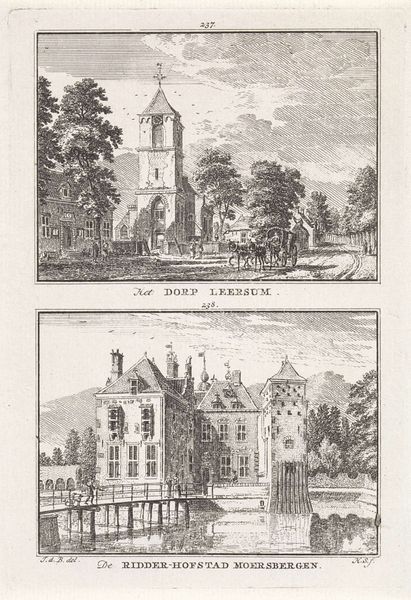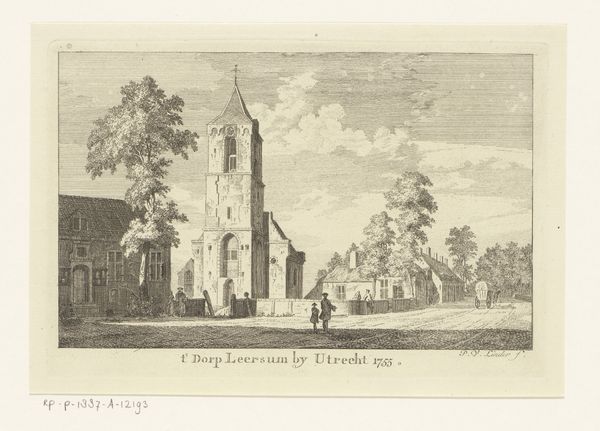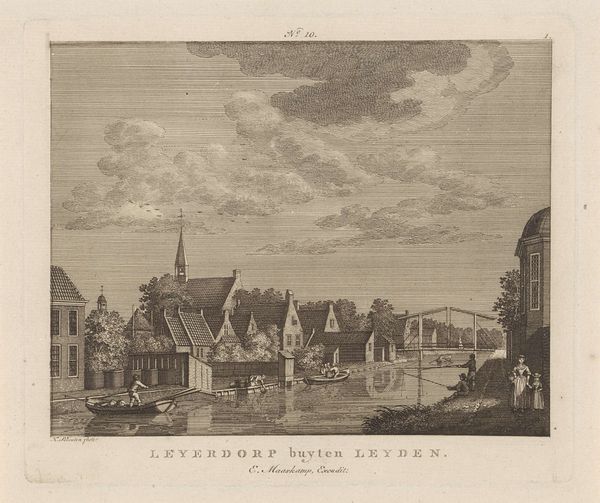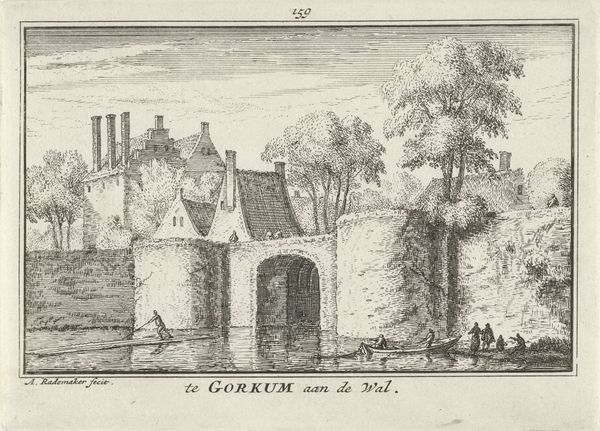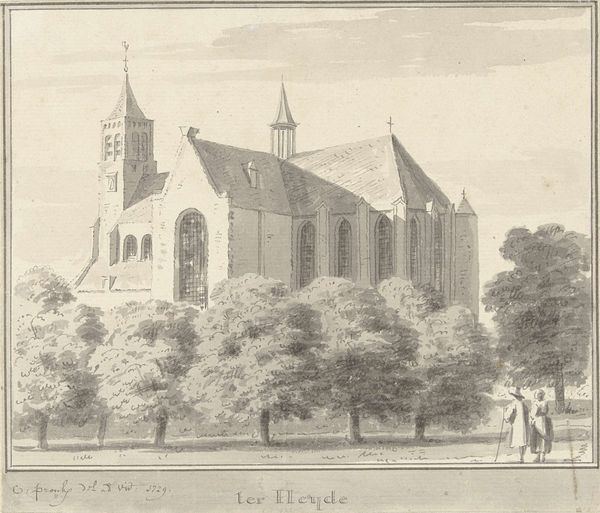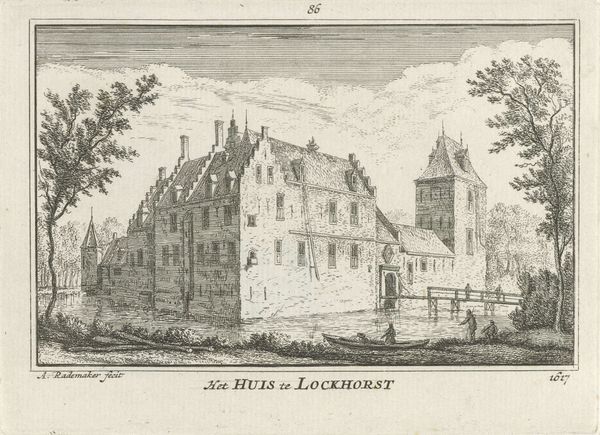
print, engraving, architecture
#
dutch-golden-age
# print
#
old engraving style
#
landscape
#
line
#
engraving
#
architecture
Dimensions: height 80 mm, width 115 mm
Copyright: Rijks Museum: Open Domain
Editor: So, this is "Gezicht op Leersum, 1630" by Abraham Rademaker, but made between 1727 and 1733. It's an engraving, currently at the Rijksmuseum. What strikes me is its meticulous detail and how it seems to capture a specific, perhaps idealized, view of this village. What stands out to you as you look at this piece? Curator: What intrigues me most is how this print functions within the larger context of 18th-century Dutch visual culture. These topographical prints served as important records, documenting the landscape and architecture for a growing public interested in their nation's identity. Note how Rademaker’s work elevates the ordinary – a simple village scene – to something worthy of preservation and dissemination. Do you see the politics at play here, in choosing to represent this, and for whom? Editor: I guess I hadn't thought about it as a kind of visual record... So it's not just a pretty picture, but also showing pride of place and distributing this identity more widely. Curator: Precisely. And consider the implications of printmaking as a medium. Multiple copies could be made and circulated, making this image accessible to a much broader audience than a painting, for example. What does that say about its role in shaping public perception of places like Leersum? Editor: It democratizes it, maybe? Instead of just wealthy patrons commissioning paintings, ordinary people could buy prints. Were these prints popular? Curator: They were indeed quite popular, satisfying a burgeoning middle class’s appetite for knowledge and ownership of their environment, visually speaking. The print trade flourished, fueling the production of countless such views. By creating and consuming images like this, the Dutch were constructing a shared visual language and understanding of their cultural heritage. Editor: So it’s much more than just an image; it's about identity and the social context in which art is produced and consumed. That’s fascinating. Thanks! Curator: Indeed. Thinking about art as part of social and cultural systems enriches the viewing experience. There is always more than meets the eye.
Comments
No comments
Be the first to comment and join the conversation on the ultimate creative platform.

